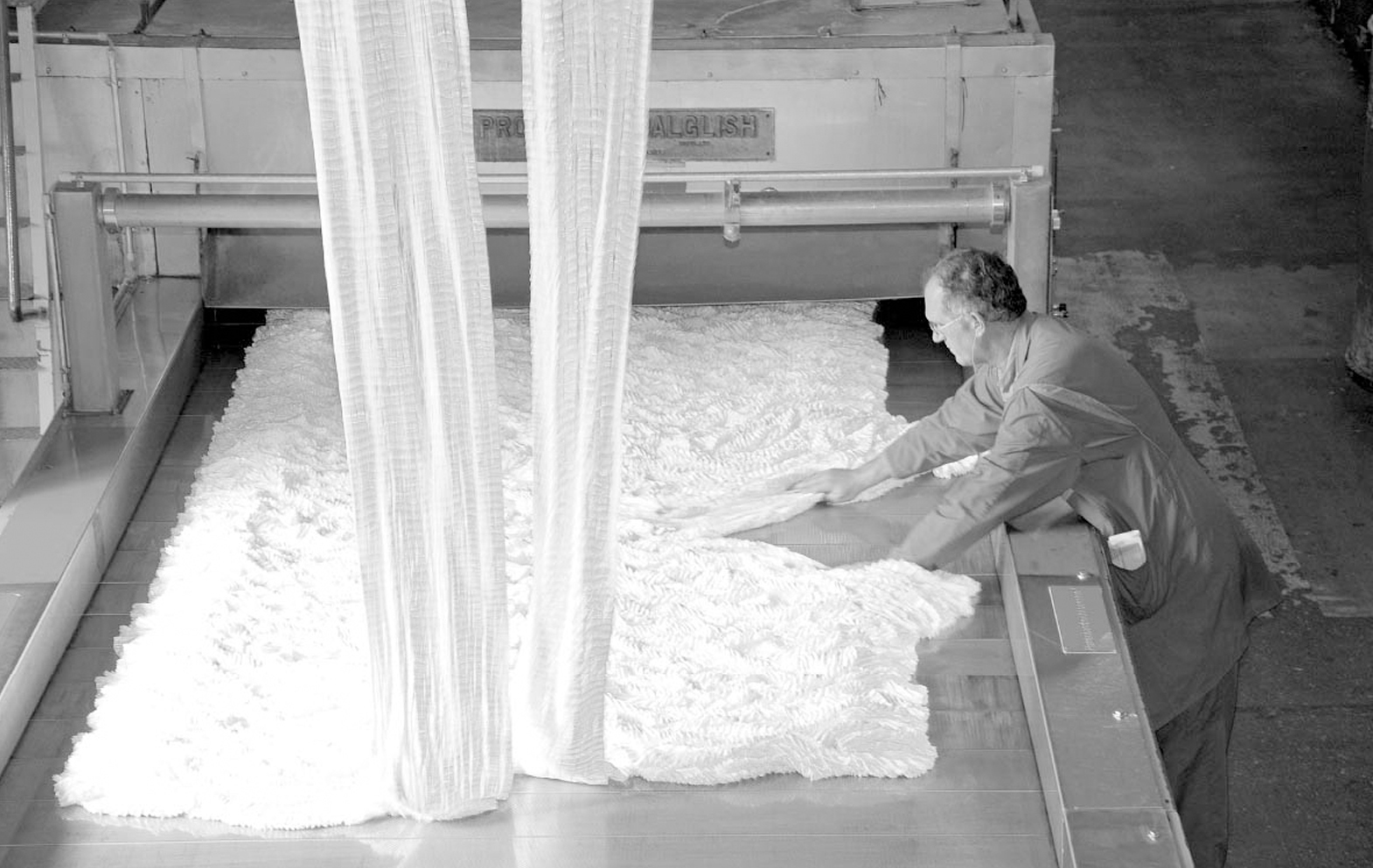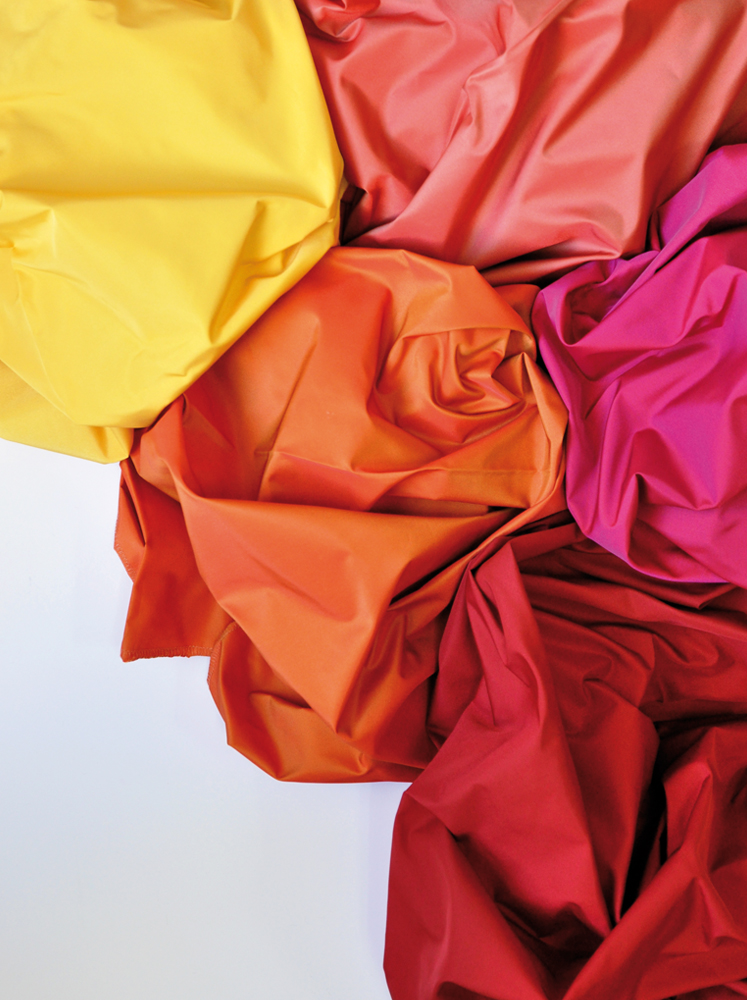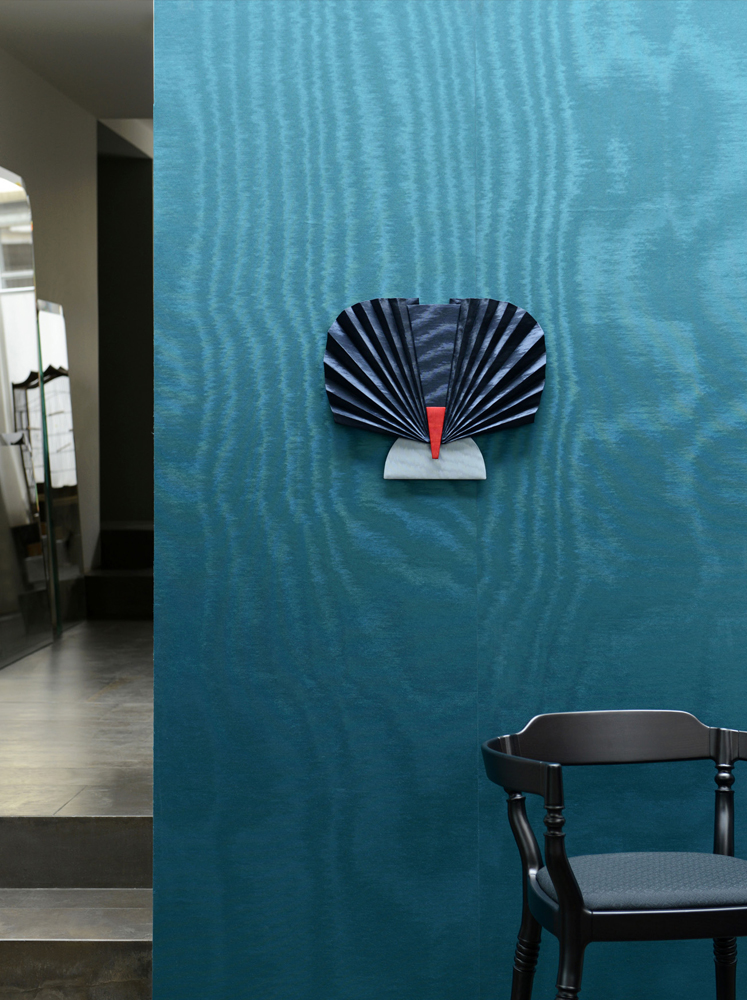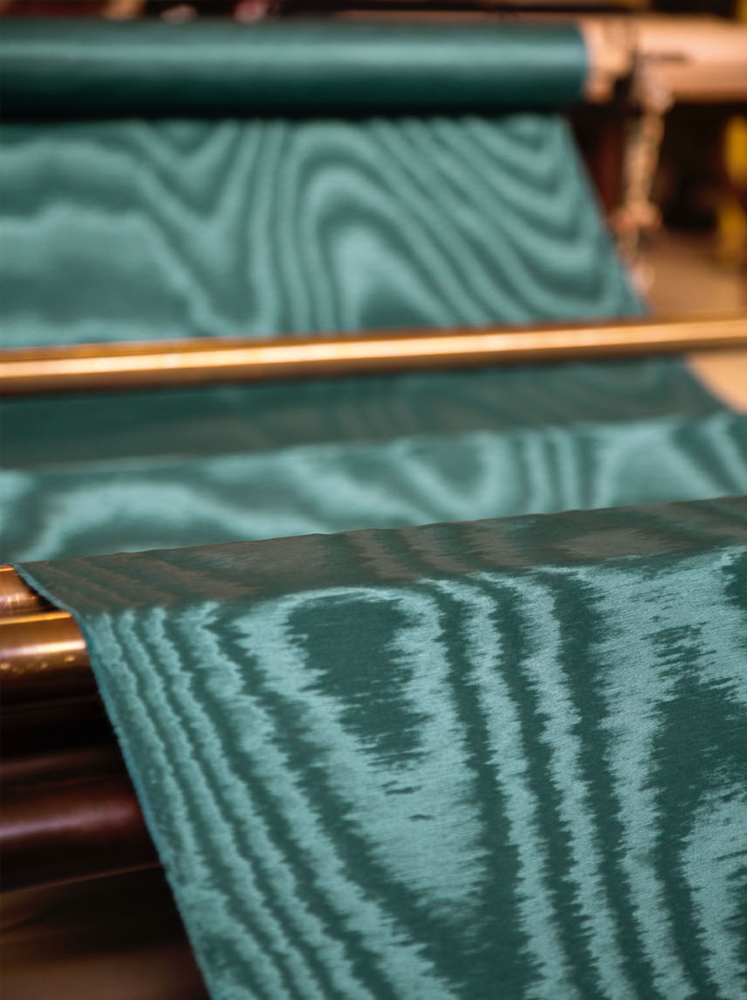Embossing is a mechanical method of crushing fabric that has existed in France since the end of the 17th century. Originally, ribbons made from various designs were passed through a kind of rolling mill, made of two heated cylinders bearing the pattern to be reproduced, one indented, the other in relief.
This system using two heated cylinders was improved in the 18th century, when only one roll was engraved and heated, and the velvet was embossed by the pressure between this engraved cylinder and a wooden counter-cylinder. This is the finishing technique we are proposing today. It responds perfectly to the demands of customers who wish to easily customize a fabric thanks to the multitude of designs available in our catalogue. These designs are available exclusively on our fabrics. They can be made on our various qualities of velvet, and also on other types of plain fabrics, especially satin and ottoman fabrics.
We suggest that you ensure the usable width of the fabric or velvet to be embossed is compatible with the width of the cylinder. Embossing on synthetic fibres is almost permanent.


This is a treatment which reduces the water permeability of fabrics while preserving air permeability as much as possible. It gives a "water repellent" effect to the fabric, which becomes waterproof and will not allow water, air or steam to pass through. Washability is limited.



Fireproofing is a treatment of textile materials with non-flammable substances in order to reduce the risk of fire or slow down flame spread rate; This treatment is classified (M0, M1, etc. in France). This treatment is not recommended for upholstery, and not all fabrics can be fireproofed. There are collections at Lelièvre Paris dedicated to the flame-retardant requirements of the hotel market, the Contract collections.
Fire treatments only undertaken to French regulations.
Washability is limited.


It is possible to paperback a fabric and a non-woven material to create wall hangings and other panels. Paperbacked fabrics are delivered untrimmed without pattern matching.
Some treatments may affect the appearance, colour or flexibility of the fabric. If in doubt, we advise you to carry out a test.

